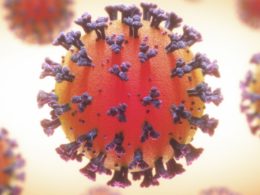October is Breast Cancer Awareness month.
Here is what you need to know about Breast Cancer and Breast Cancer Awareness Month:
What is breast cancer?
· Breast cancer is the uncontrolled growth of breast cells.
· The term “breast cancer” also refers to a malignant tumour that has developed from cells in the breast.
· Usually breast cancer either begins in the cells of the lobules, which are the milk-producing glands, or the ducts, the passages that drain milk from the lobules to the nipple.
· Less commonly, breast cancer can begin in the stromal tissues, which include the fatty and fibrous connective tissues of the breast.
· Over time, cancer cells can invade nearby healthy breast tissue and make their way into the underarm lymph nodes, small organs that filter out foreign substances in the body.
· If cancer cells get into the lymph nodes, they then have a pathway into other parts of the body.
· The breast cancer stage refers to how far the cancer cells have spread beyond the original tumour.
What are the causes of Breast Cancer?
· Cancer occurs as a result of mutations, or abnormal changes, in the genes responsible for regulating the growth of cells and keeping them healthy.
· The genes are in each cell’s nucleus, which acts as the “control room” of each cell. Normally, the cells in our bodies replace themselves through an orderly process of cell growth: healthy new cells take over as old ones die out.
· But over time, mutations can “turn on” certain genes and “turn off” others in a cell. That changed cell gains the ability to keep dividing without control or order, producing more cells just like it and forming a tumour.
· A tumour can be benign (not dangerous to health) or malignant (has the potential to be dangerous). Benign tumours are not considered cancerous: their cells are close to normal in appearance, they grow slowly, and they do not invade nearby tissues or spread to other parts of the body.
· Malignant tumours are cancerous. Left unchecked, malignant cells eventually can spread beyond the original tumour to other parts of the body.
Signs and Symptoms of Breast Cancer
· Signs and Symptoms of Breast Cancer symptoms vary widely — from lumps to swelling to skin changes — and many breast cancers have no obvious symptoms at all.
· According to the American Cancer Society, any of the following unusual changes in the breast can be a symptom of breast cancer: swelling of all or part of the breast skin irritation or dimpling breast pain nipple pain or the nipple turning inward redness, scaliness, or thickening of the nipple or breast skin a nipple discharge other than breast milk a lump in the underarm area.
· These changes also can be signs of less serious conditions, such as an infection or a cyst.
Important precautions
· Performing a monthly breast self-exam is the best way of noticing any changes in your breasts.
· It is important to get any breast changes checked out by a doctor as soon as possible.
· If you’re older than 40 or have a high risk of developing breast cancer, you should also have an annual mammogram and a physical exam.
· The earlier breast cancer is found and diagnosed, the better your chances of successful treatment.
Cancer Screening and Testing
· Most breast-cancer-related tests fall into one or more of the following categories:
Screening tests:
· Screening tests (such as yearly mammograms) are given routinely to people who appear to be healthy and are not suspected of having breast cancer.
· Their purpose is to find breast cancer early before any symptoms can develop and cancer usually is easier to treat.
Diagnostic tests
· Diagnostic tests (such as biopsy) are given to people who are suspected of having breast cancer, either because of symptoms they may be experiencing or a screening test result.
· These tests are used to determine whether or not breast cancer is present and, if so, whether or not it has travelled outside the breast.
· Diagnostic tests also are used to gather more information about cancer to guide decisions about treatment.
Monitoring tests
· Once breast cancer is diagnosed, many tests are used during and after treatment to monitor how well therapies are working. Monitoring tests also may be used to check for any signs of recurrence.
What is Breast Cancer Awareness Month?
· Breast Cancer Awareness Month, held in October every year, was created in 1985 to promote screening and prevention of the disease, which affects one in eight women in the United States every year and 2.3 million women worldwide.
· Known best for its pink theme colour, the month features a number of campaigns and programmes— conducted by groups ranging from breast cancer advocacy organisations to local community organisations to major retailers — aimed at:
· Supporting people diagnosed with breast cancer, including metastatic breast cancer
· Educating people about breast cancer risk factors
· Stressing the importance of regular screening, starting at age 40 or an age that’s appropriate for your personal breast cancer risk and
· Fundraising for breast cancer research








